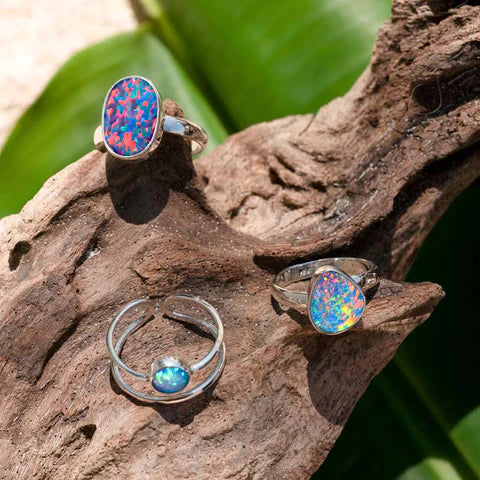How Opal is valued?

How Opal is valued
Valuing opal involves several key factors, each contributing to the overall worth of the gemstone. Unlike many other precious stones, opals have a unique set of characteristics that make their valuation a bit more complex. Here are the primary factors considered in valuing opals:
- Color: One of the most crucial factors in valuing opals is their color. Opals that display bright and vivid colors are generally more valuable. The play of color, or 'fire', which refers to the way colors shift and change as the stone is moved, also significantly impacts value. Red fire is typically more valued than blue or green.
- Pattern: The pattern of the color within the opal is another significant factor. Opals can have various patterns, such as harlequin, pinfire, or flash. A large, bright, and distinct pattern usually increases the opal's value.
- Brightness: The brightness of an opal, or how much it 'lights up' with color in different lighting conditions, also affects its value. The brighter and more vivid the opal, the more valuable it is likely to be.
- Body Tone: This refers to the underlying color of the opal, ranging from black to white. Black opals, which have a dark body tone, are typically the most valuable because their dark background makes the play of color more pronounced.
- Transparency: Opals can range from completely opaque to transparent. The level of transparency can affect value, with more transparent stones often being more prized.
- Size and Carat Weight: Larger opals are rarer and thus generally more valuable. The weight of an opal is measured in carats, with one carat equivalent to 0.2 grams.
- Shape and Cut: The shape and cut of an opal can influence its value. Well-cut stones that enhance the play of color are more desirable. Unusual or particularly skillful cuts can also increase value.
- Type of Opal: There are various types of opals, such as black, boulder, white, crystal, and fire opals. Each type has its own typical price range, with black opals being among the most valuable.
- Condition: Any cracks, chips, or flaws can significantly reduce the value of an opal. Flawless stones are rare and thus more valuable.
- Provenance: The origin of the opal can play a role in its value. Australian opals, particularly from famous mines like Lightning Ridge or Coober Pedy, are often highly prized.
- Market Trends and Demand: Like any gemstone, market demand and current trends can influence the value of opals. Certain colors or types of opals may become more popular and valuable at different times.
When valuing an opal, a combination of these factors is considered to determine its overall worth. Expert gemologists or opal specialists usually conduct these valuations due to the complexity and subtlety of these factors.
